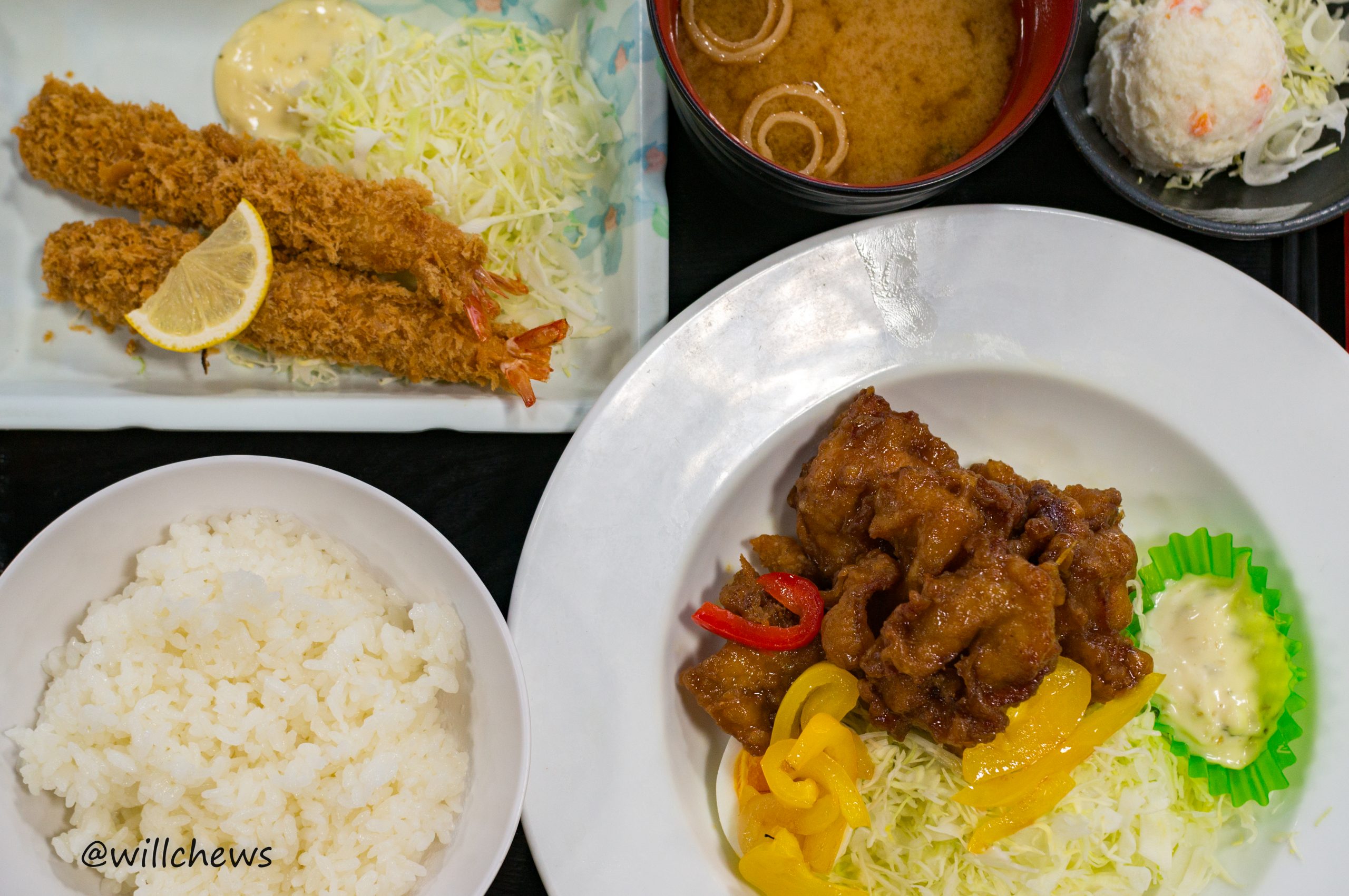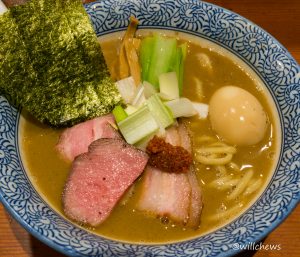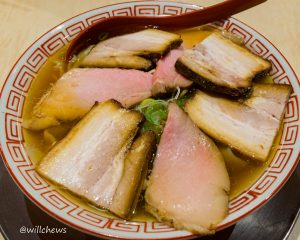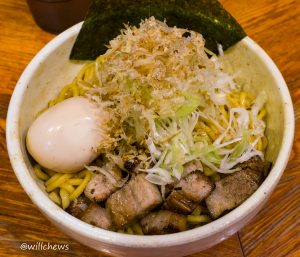Shokudo (食堂, “cafeteria”) are a central part of urban Japanese working life. While there are no shortage of restaurants in large cities as Tokyo, oftentimes it’s just more convenient to got to the cafeteria that is already in or close by one’s office building. Their menus are usually the same: set meals of protein entrées, donburi, or curry; bowls of ramen, udon, or soba noodles. These are the ways that Japanese working folk have been eating since their schooldays, giving them a system of comfort, predictability, and good value. Note that most shokudo are ostensibly open to the public: I’ve eaten at a number of shokudo at Japanese universities with which I was unaffiliated, something that would be unimaginable to American universities.
One of the most novel shokudo I’ve eaten at is the cafeteria to the Japanese Ministry of Agriculture, Forestry, and Fisheries (MAFF), located in the heart of Japanese political power in the Kasumigaeseki neighborhood of Tokyo, south of the Imperial Palace. In addition to feeding its employees, the cafeteria also only serves Japanese produce to showcase the work of Japanese farmers and fishermen. The menu, as you can see from my own tray of karaage (fried chicken thigh breaded in potato and wheat flour) in black vinegar sauce, miso soup, and add-ons of potato salad and fried shrimp–isn’t that special. It’s a collection of various vegetables or (usually fried) meat in curry, donburi, or set meals, just like every other shokudo in Japan.
Except for one thing: there’s whale on the menu.

That goes back to the purpose of the the cafeteria, which is to showcase and express national pride in Japanese agriculture and fishing. But whale–specifically the meat from Bryde’s Whale (イワシ鯨, iwashi kujira)–on the menu showcases another facet of that national pride. Basing my knowledge largely from a NYT report published after Japan resumed commercial whaling in July 2019, Japan had turned to whale as a source of protein after World War II and until the mid-1960s, where through avenues such as shokudos in schools, it was the most commonly consumed meat in the country. As Japan has prospered, consumer tastes have shifted away from whale to the point where the whaling industry is small (only 300 people), is reliant on government subsidies, and has no real path towards commercial success.
It’s a national pride issue, with the Japanese government citing Japan’s long history of hunting and consuming whale, and using the “scientific research” loophole to hunt specific, non-endangered whale species (Sei, Bryde’s, Minke) since the 1980s. When the International Whaling Commission declared there was no scientific basis for the practice, Japan pulled out of the commission two weeks after my visit to the MAFF shokudo, and 6 months later, declared it would resume commercial whaling. The Japanese public, based on NHK (the government broadcaster) and Japanese government surveys, are broadly in favor of whaling, even if there’s little interest in consuming whale meat themselves.
Whale meat appears on the MAFF cafeteria menu in two forms: tatsuage (fried with potato flour only, no wheat) nuggets in curry, or as a steak set. The image of the former doesn’t look particularly appetizing, and I’m not sure how many orders the cafeteria gets per day/week/month. But it’s a powerful reminder that, for all the over-analysis of chashu preparation or noodle akalinity on this site, food exists in a larger, ahem, ecosystem of political and social life. Food writing that doesn’t acknowledge this most basic of truths isn’t worth reading.
If you don’t like it, the National Diet Building is only a few steps away.

Rating: Neutral
Recommended Dishes: It’s like pretty much every other Japanese shokudo out there, save for two items.
手しごとや 咲くら 農林水産省店 (Teshigotoya Sakura Norinsuisansho-ten)
農林水産省店 Ministry of Agriculture, Forestry, and Fisheries
東京都千代田区霞が関1-2-1 農林水産省 北別館 1F
Kasumigaeseki Station (Chiyoda, Hibiya, Marunouchi Lines)



